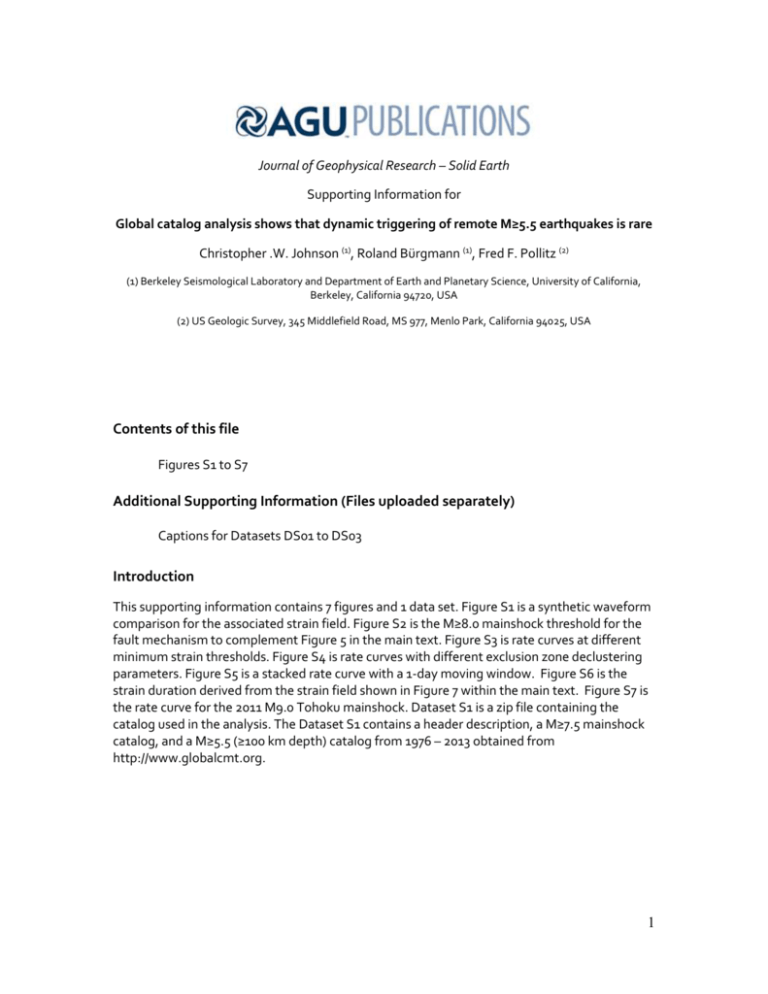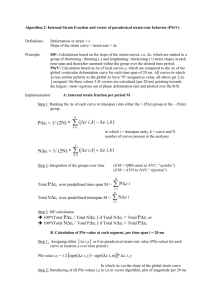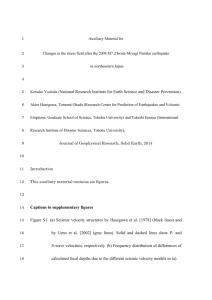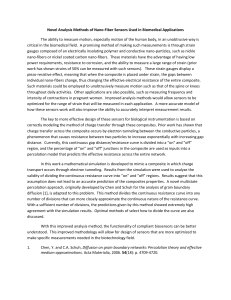jgrb51063-sup-0001-supinfo
advertisement

Journal of Geophysical Research – Solid Earth Supporting Information for Global catalog analysis shows that dynamic triggering of remote M≥5.5 earthquakes is rare Christopher .W. Johnson (1), Roland Bürgmann (1), Fred F. Pollitz (2) (1) Berkeley Seismological Laboratory and Department of Earth and Planetary Science, University of California, Berkeley, California 94720, USA (2) US Geologic Survey, 345 Middlefield Road, MS 977, Menlo Park, California 94025, USA Contents of this file Figures S1 to S7 Additional Supporting Information (Files uploaded separately) Captions for Datasets DS01 to DS03 Introduction This supporting information contains 7 figures and 1 data set. Figure S1 is a synthetic waveform comparison for the associated strain field. Figure S2 is the M≥8.0 mainshock threshold for the fault mechanism to complement Figure 5 in the main text. Figure S3 is rate curves at different minimum strain thresholds. Figure S4 is rate curves with different exclusion zone declustering parameters. Figure S5 is a stacked rate curve with a 1-day moving window. Figure S6 is the strain duration derived from the strain field shown in Figure 7 within the main text. Figure S7 is the rate curve for the 2011 M9.0 Tohoku mainshock. Dataset S1 is a zip file containing the catalog used in the analysis. The Dataset S1 contains a header description, a M≥7.5 mainshock catalog, and a M≥5.5 (≥100 km depth) catalog from 1976 – 2013 obtained from http://www.globalcmt.org. 1 Figure S1. Strain field calculated for the 06/18/2000 M7.9 from the square root of the second invariant of the deviatoric train tensor, which represents the maximum shear magnitude of the passage of the seismic waves. The strain field is calculated from synthetic waveforms filtered at -field levels. The superimposed white circle is the mainshock distance calculated using Equations 1 & 2 and used to determine the region of elevated strain for the initial rate curves. The bottom panel shows the synthetic seismograms with data recorded at the CTAO station (yellow triangle) to verify the calculations. 2 Figure S2. Stacked rate curves for M≥5.5 seismicity in the high strain region calculated using Equation 1 and 2 for the 26 M≥8.0 mainshocks are separated by fault mechanism. Shown is the deviation from background rates with the 95% confidence interval in gray. The strike-slip (a) and normal (c) mainshocks both indicate a period of elevated seismicity during the first 10 days and 20 days after time zero, respectively. The 16 reverse (b) and 3 oblique (d) mainshocks do not produce a significant increase. None of the rate curves show a prolonged period of reduced activity below the confidence intervals. 3 Figure S3. Rate curves for M≥5.5 events are produced using 113 M≥7.5 mainshock at three different minimum strain thresholds, 0.05 µstrain, 0.1 µstrain, and 0.2 µstrain calculated from Equation 1 and 2, that show the deviation from the calculated background rate for each highstrain region. The change in area of the high-strain region is shown in Figure 2. The rate curves do not indicate a change in activity following the transient stress and are similar for each threshold tested. 4 Figure S4. Testing the declustering influence by changing the spatial and temporal windowing. (Top) Rate curve containing 113 M≥7.5 mainshocks with a 35-day exclusion zone for all nearfield events and no far-field declustering. (Bottom) Rate curve containing 113 M7.5 mainshock with ans exclusion zone distance of 0.5 fault lengths. Figure S5. M≥7.5 stacked rate curve for 113 M≥7.5 mainshocks with a 1-day moving window. The shorter moving window retains the high frequency pulsing in the data series but does not alter the results when compared to the 3-day window used throughout the study. 5 Figure S6. Strain duration comparison for three large mainshocks located in the east Indian Ocean with differing depths and fault mechanisms. The spatial coloring represents the number of seconds the strain rate curve is above the 0.1 µstrain threshold. The strain rate curve is lowpass filtered at 80s. Yellow triangles represent the far-field M≥5.5 seismic events for 20 days following the mainshock. The top figure shows the 08/19/1977 M8.3 normal event and its 17 postshocks. The middle figure is produced using the 03/28/2005 M8.6 Nias reverse mainshock and 13 postshocks. The bottom figure is produced using the 04/11/2012 M8.6 strike-slip event and contains 19 M≥5.5 events during the first 20 days with three postshocks occurring within 24 hours of the mainshock. 6 Figure S7. Rate curve for the 2011 M9.0 Tohoku mainshock does not indicate a far-field increase in M≥5.5 events in the immediate days following the mainshock. Data Set S1. Data set used for analysis. Three files included contain the column descriptions (DS01), M≥5.5 catalog (DS02), and the M≥7.5 mainshock catalog (DS03). 7





